
YALI

Als YALI werden Sommervillen und -residenzen bezeichnet, die in Holzbauweise vor allem am Ufer des Bosporus in der Nähe von Istanbul errichtet wurden. Typisch ist ein recht flaches, weit auskragendes Dach. Yalýs waren von Gärten umgeben und hatten gewöhnlich eine Bootsanlegestelle.
Charakteristika der YALI
Yalýs wurden grundsätzlich aus Holz erbaut. Lediglich Grund- und Kaimauern bestehen aus Stein. Die leichte zweigeschossige Holzbauweise hat den Vorteil, dass einerseits eine gewisse Resistenz gegen Erdbeben und andererseits gegen die vom Bosporus vordringende Feuchtigkeit gegeben ist. Ein Yalý hat in der Regel hohe Räume mit zahlreichen Fenstern. Dies ist darauf zurückzuführen, dass die Yalýs als Sommerhäuser wohlhabender Osmanen dienten, die häufig auch noch über ein Stadtpalais (Konak) und einen weiteren Köþk auf den Prinzeninseln oder am Marmarameer verfügten. Den sommerlichen Temperaturen wurde zusätzlich durch flache, weit auskragende Ziegeldächer entgegengewirkt.
Die Yalýs verfügen zumeist aufgrund ihrer Lage über ein eigenes Bootshaus bzw. eine Anlegestelle.
Viele der Bosporusvillen befanden sich nicht über Generationen in Familienbesitz. Dies hatte zur Ursache, dass die Holzbauweise im Unterhalt sehr kostenaufwändig war, sodass sich z.B. der Wesir ein Yalý nur leisten konnte, solange er im Amt war. Nach einem Besitzerwechsel wurde das Haus häufig abgebrochen und nach Geschmack des neuen Eigentümers neu errichtet. Nicht nur aus diesem Grund waren die Yalýs immer besonders bedroht.
Im Inneren der Yalýs befinden sich in der Regel große, kreuzförmige Zentralhallen. Diese führen stets auf der einen Seite zum Bosporus, auf der anderen zum parkartigen Garten. In der Mitte der marmorbelegten Halle befindet sich des Öfteren ein Springbrunnen, überwölbt von einer unter dem Dach verborgenen Kuppel. Die Decken der Wohnräume, die in Harem und Selamlik gegliedert wurden, werden stets mit bemalter Holzschnitzerei geschmückt. Auch Wände, Türen und Gesimse ziehen die Blicke auf diese Weise auf sich.
Umgeben werden die traditionellen Yalýs von prächtigen Gärten, in denen Pinien und Palmen neben Magnolien, Glyzinien und Judasbäumen den Aufenthalt zum Vergnügen machen.
Geschichte der YALI
Die erste Darstellung von Yalý-ähnlichen Uferhäusern datiert um das Jahr 1000: Uigurische Maler stellten das Paradies als eine Reihe von Yalýs dar. Die Bauweise der Bosporusvillen geht auf traditionelle seldschukische Elemente zurück und so verwundert es nicht, dass auch außerhalb Istanbuls ähnliche Gebäude entstanden, etwa in Amasya.
Im 16. Jahrhundert, unter Sultan Süleyman dem Prächtigen, begann die Bebauung des Bosporusufers mit Moscheen und Yalýs. In der Anfangszeit war das Leben in solchen Residenzen dem Adel vorbehalten. Der Sultan selbst verfügte über Villen an beiden Uferseiten. Im 17. Jahrhundert entstand die besonders durch die Yalýs geprägte, bis heute fortlebende Wohnkultur Istanbuls. Aus dieser Zeit ist lediglich das Köprülü Yalýsý erhalten.
Bis Mitte des 19. Jahrhunderts baute man in großer Anzahl Uferpaläste und Lustschlössr, die sich wie eine Perlenschnur am Wasser entlangzogen. Dieses Bild wie aus Tausendundeiner Nacht wurde vom Kupferstecher Anton Ignaz Melling festgehalten. In dieser Zeit wuchs der Einfluss anderer Nationen auf das Osmanische Reich und insbesondere die deutsch-türkische Beziehung war eng und freundschaftlich. Dies führte einerseits dazu, dass ausländische Investoren Yalýs kauften oder selbst errichteten, wie z.B. die Gebäude der ehemaligen französischen Botschaft, die Sommerresidenz in Tarabya als Besitz der damaligen Deutschen Botschaft Konstantinopel, sowie das Huber Köþkü der Firma Krupp. Andererseits kam die Mode auf, nicht mehr nach türkischem Stil zu bauen, sondern mitteleuropäische Steinpaläste an die Ufer Istanbuls zu bauen.
Heute sind die Yalýs wieder begehrte Wohnobjekte, doch sind nach wie vor viele vom Verfall und dem Bau von Schnellstraßen bedroht. Die Türkei versucht dem durch staatliche Beihilfen entgegenzuwirken. Diese Bemühungen wurden bisher durch umfangreiche Renovierungsmaßnahmen belohnt. Seit einigen Jahren werden auch wieder Neubauten im traditionellen Stil der Yalýs errichtet.
Erhaltene YALI
Besonders prächtige und sehenswerte Beispiele erhaltener Yalýs sind:
Asiatische Uferseite
Köprülü Yalýsý: ältestes erhaltenes Yalý (17. Jahrhundert)
Savfet Pascha Yalýsý: Der Selamlik ist noch erhalten und befindet sich bis heute in Familienbesitz
Sadullah Pascha Yalýsý (CIMG2355): Vom Architekten Sadullah Pascha vor der Französischen Revolution erbaut
Ismail Pascha Yalý: Uferpalast des Vizekönigs von Ägypten
Nazif Pascha Yalýsý: Komplett erhaltenes Yalý in Vanýköy
Europäische Uferseite
Serifler Yalýsý: Als Museum zugängliches Yalý am „Dorfplatz“ des Stadtteils Emirgan
Kavafiyan Yalýsý: Seit 1751 unverändert, in Bebek gelegen
Yalý der ehemaligen französischen Botschaft aus dem 18. Jahrhundert in Tarabya
Zografos Yalý: Tarabya
Huber Köþkü von Krupp, Tarabya
Sommerresidenz des Deutschen Generalkonsulats Istanbul, heute deutsch-türkische Begegnungsstätte
aus: wikipedia
Quelle: http://www.icvbbulletin.org/Water_Mansions.htm
THE WATER MANSIONS ON THE ASIAN COAST
THE DEBRELI ISMAIL PASA YALI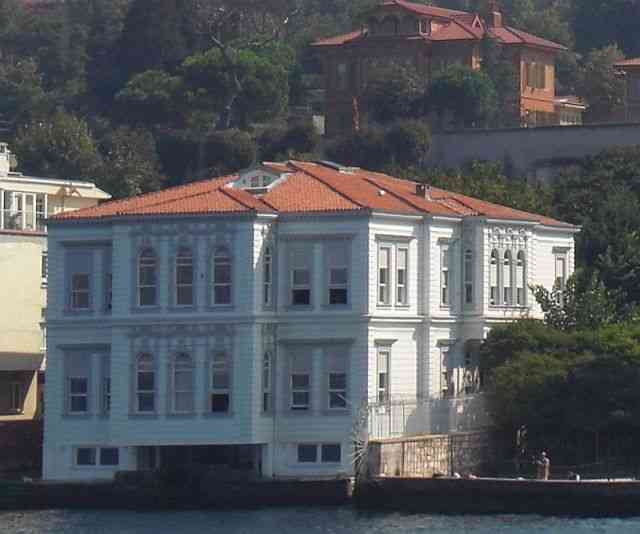
(Photo: robbie2009)
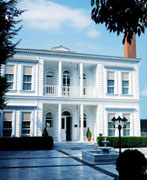
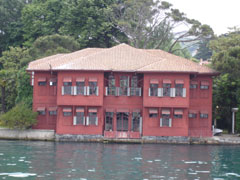
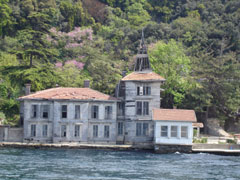
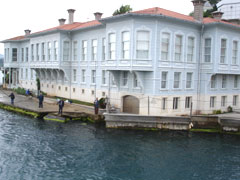
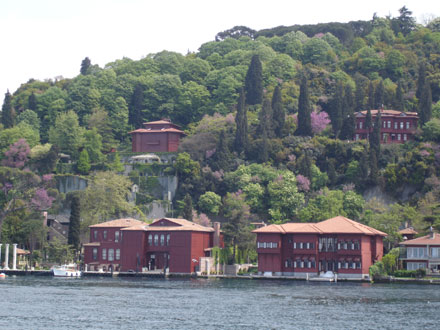
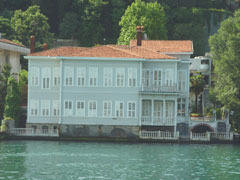
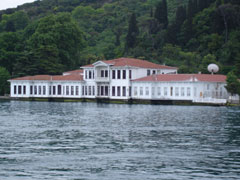
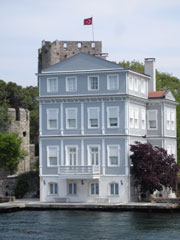

(Photo:robbie2009)

The Göksu stream, also referred to as the “Sweet waters of Asia”, flows into the Bosphorus in Anadoluhisari, previously called Güzelce. One of the most beautiful yali in this region is the Bahriyeli Sedat Bey Yali. This house was built in the Neo Baroque style and was constructed by the grandfather of Sedat Bey, Mustafa Resit Pasa. Because of the magnificient tree in its garden, it is also called the Magnolia Yali.
THE ZARIF MUSTAFA PASA YALI
(CIMG2347)
(Photo:robbie2009)
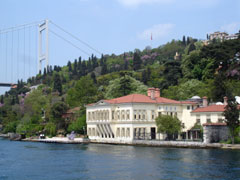

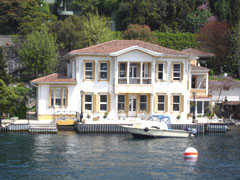
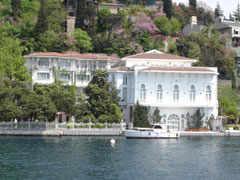
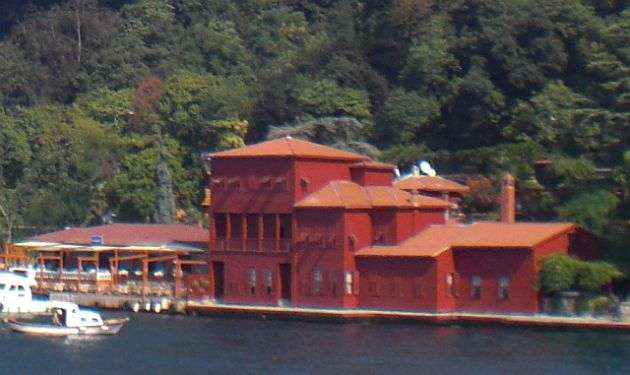
(Photo:robbie2009)
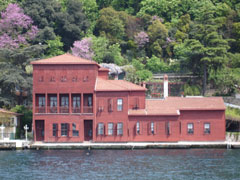
Salih Efendi, a graduate of the first medical school in the Ottoman Empire during the reign of Sultan Mahmut II, was the head physician for three sultans. He was interested in botany. He developed a special kind of rose named after him, which he personally grafted, and this rose was called “Hekimbasi”. During the spring, the mansion's garden became a paradise of colours. It is one of the rarest mansions on the Bosphorus which still keeps its original architectural style and its original furniture. The present occupants of the mansion are the family members of Salih Efendi, who died in 1905.
THE YAGLIKÇI HACI RESIT BEY AND PRINCESS RUKIYE YALI
Yaglikçi Haci Resit Bey Yali was restored by Barlas Turan in 1980's. Situated in the cove of Kanlica, it was originally built in 1850's. The neighboring mansion was given as a gift to Princess Rukiye, the daughter of the Ottoman Governor of Egypt, Abbas Halim Pasa. This house, is surrounded by the grove of Mihrabad. The house was purchased in 1957 by Özdemir Atman, a famous name within the Turkish Jockey Club.
THE SADRAZAM KADRI PASA YALI
Kadri Pasa bought this mansion when he married the daughter of the famous palace physician of Sultan Abdülmecit, Ismail Pasa. Kadri Pasa had been a Grand Vizier and later he became the Governor of Edirne. He died in 1883. The heirs of the Pasa restored the present building after a ship had crashed into the mansion, causing serious damage. Next to the yali is the house of a prominent Turkish singer Sezen Aksu, and on the other side is the mansion of Cem Boyner. The period of architecture of this Kanlica mansion dates mainly to the 1850's.
THE ETHEM PERTEV YALI
The famous cosmetic cream, Krem Pertev, was produced in the 1960's by one of the early pharmacists of Turkey, Ethem Pertev. He was born in 1871, and is the second owner of this mansion also known as Sarayli Hanim Yali. After the death of Ethem Bey, his children continued to run his pharmacy in Aksaray, and sold the mansion in 1932 to a ship's captain. Built in the Art Nouveau architectural style, this house has been successfully renovated in recent years.
THE HACI AHMET BEY YALI
The port of Kanlica is called “Glaros”, meaning sea gull. In Ottoman times, people drove oxcarts, called “kagni”, and when they went to Kanlica it meant that they were going to a place which could be reached by kagni. Bosphorus village known as Kanlica is famous for its yoghurt, and the mansion Haci Ahmet Bey is also located there.. This yali was built during the reign of Sultan Abdülhamit II, who ruled the Empire for 33 years. It now belongs to the Ramazanoglu family. Atatürk is said to have visited the house in the circumcision ceremony of one of their sons.
THE YAGCI SEFIK BEY YALI
In the place of Yagci Sefik Bey Yali, there was an earlier mansion belonging to Cemile Sultan, the sister of Sultan Abdülhamit II. In 1905, Sefik Bey, a successful businessman and also the founder of Association of the Naval Fleet, built this magnificient yali. The larger of the two parts of the house is the Haremlik - reserved for women, and the smaller building is the Selamlik – reserved for men. As you travel towards Çubuklu from South to north, you see the 7-8 Hasan Pasa Yali and the Rasim Pasa Yali, recently turned into a boutique hotel.